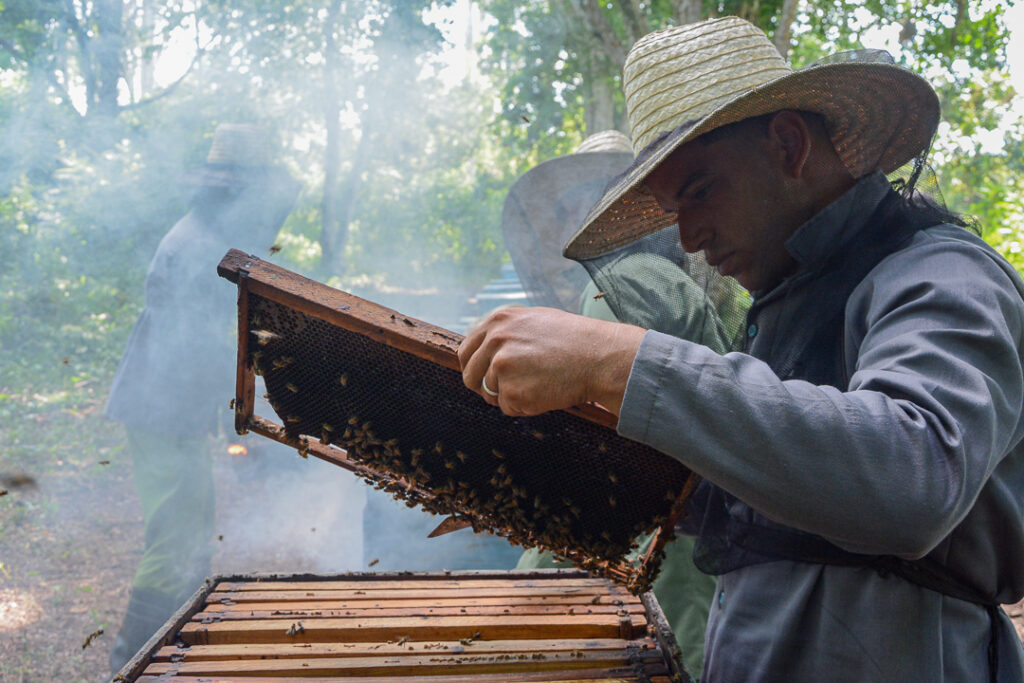![]()
To guarantee social consumption, around one and a half tons are sold monthly in the store located in the market on Cisneros Street, while another amount goes to the Provincial Company of Pharmacies and Opticians and Labiofam for the production of medicines

Camagüey, Cuba, Oct. 6th.- The province of Camagüey aspires to increase honey production during the honey campaign of October, November and December, months in which historically the territory reaches more than 55 percent of the annual plan, starting from the production of white and purple bells and Indian vine.
Omelio Barba Alonso, director of the Camagüey Beekeeping Base Business Unit (UEB, Spanish Acronym), commented that the current year has not been favorable to meet the expected indicators due to the intense drought and then the floods in June that affected coastal blooms.
However, he noted, the production of queen bee and propolis is met and exceeded, in addition to guaranteeing exports, which must exceed 705 tons in the year.
He assured that for this period they have the commitment of the 243 beekeepers, as well as the tanks, hive elements and sheets necessary to work with the 18,575 hives that exist today in Camagüey.
Likewise, he highlighted the contract that the UEB maintains with the Provincial Meteorological Center to, through the early warning report, know solar radiation, humidity levels, the behavior of the wind and in general monitor climatic conditions.
To guarantee social consumption, he explained, around one and a half tons are sold monthly in the store located in the market on Cisneros Street, while another amount goes to the Provincial Company of Pharmacies and Opticians and Labiofam for the production of medicines.
In the province, he said, the municipalities with the best results are Vertientes, Najasa and Santa Cruz del Sur, and stated that by 2024 the aim is to register 900 tons of honey and stabilize production with 19 thousand hives.
The UEB maintains important work ties with the University of Camagüey Ignacio Agramonte Loynaz, an institution with which they plan to develop research on the genetics of bees, in addition to the work practices carried out by fourth and fifth year students of the Veterinary Medicine degree.
(ACN)